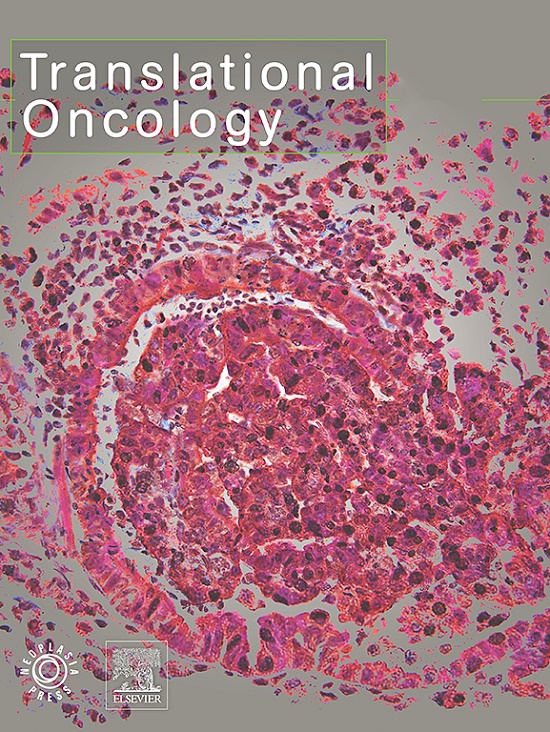CAV1 通过 IFNGR1 抑制 Xc- 系统,促进铁凋亡,从而抑制干细胞,提高乳腺癌的抗 PD-1 疗效
IF 5
2区 医学
Q2 Medicine
引用次数: 0
摘要
乳腺癌是全球女性中发病率最高的恶性肿瘤,乳腺癌干细胞(BCSCs)是导致转移和复发的主要因素。大量研究阐明了铁凋亡与细胞干性之间的关系,确定Xc-系统是管理铁凋亡的关键调控机制。然而,人们对CAV1和铁凋亡之间的相互作用及其对乳腺癌干性的影响仍然了解不足。这一知识空白阻碍了乳腺癌靶向疗法的发展。我们利用免疫组化和生物信息学分析证明了CAV1在乳腺癌组织中的下调。此外,我们还利用 CCK-8 检测法、EDU 染色法和 Transwell 检测法来评估细胞的增殖、迁移和侵袭能力。此外,我们还评估了与铁突变相关的指标,同时通过球培养实验和流式细胞术技术检查了与干性相关的标记物。我们的研究结果表明,CAV1的表达可通过铁中毒诱导细胞死亡,同时通过上调IFNGR1和促进铁中毒抑制细胞增殖和干性特征。此外,我们的体内实验还发现,CAV1的过表达能增强抗PD-1疗法的疗效。总之,我们的研究阐明了 CAV1 在乳腺癌中对铁凋亡的调控作用;它抑制了 BCSC 的特征,同时将 CAV1 定位为抗击这种疾病的一个有前景的治疗靶点。本文章由计算机程序翻译,如有差异,请以英文原文为准。
CAV1 inhibits Xc- system through IFNGR1 to promote ferroptosis to inhibit stemness and improves anti-PD-1 efficacy in breast cancer
Breast cancer is the most prevalent malignancy among women worldwide, with breast cancer stem cells (BCSCs) being the primary drivers of metastasis and recurrence. Numerous studies have elucidated the relationship between ferroptosis and cellular stemness, identifying the Xc- system as a key regulatory mechanism governing ferroptosis. However, the interplay between CAV1 and ferroptosis, along with its implications for stemness in breast cancer, remains inadequately understood. This gap in knowledge impedes advancements in targeted therapies for breast cancer. We employed immunohistochemistry and bioinformatics analyses to demonstrate the downregulation of CAV1 in breast cancer tissues. Additionally, we utilized CCK-8 assays, EDU staining, and Transwell assays to assess cell proliferation, migration, and invasion capabilities. Furthermore, we evaluated indicators associated with ferroptosis while examining markers related to stemness through sphere culture experiments and flow cytometry techniques. Our findings indicate that CAV1 expression can induce cell death via ferroptosis while simultaneously inhibiting both cell proliferation and features of stemness by upregulating IFNGR1 and promoting ferroptosis. Moreover, our in vivo experiments revealed that overexpression of CAV1 enhances the efficacy of anti-PD-1 therapy. In conclusion, our study elucidates the regulatory role of CAV1 on ferroptosis within breast cancer contexts; it suppresses BCSC characteristics while positioning CAV1 as a promising therapeutic target for combating this disease.
求助全文
通过发布文献求助,成功后即可免费获取论文全文。
去求助
来源期刊

Translational Oncology
ONCOLOGY-
CiteScore
8.40
自引率
2.00%
发文量
314
审稿时长
54 days
期刊介绍:
Translational Oncology publishes the results of novel research investigations which bridge the laboratory and clinical settings including risk assessment, cellular and molecular characterization, prevention, detection, diagnosis and treatment of human cancers with the overall goal of improving the clinical care of oncology patients. Translational Oncology will publish laboratory studies of novel therapeutic interventions as well as clinical trials which evaluate new treatment paradigms for cancer. Peer reviewed manuscript types include Original Reports, Reviews and Editorials.
 求助内容:
求助内容: 应助结果提醒方式:
应助结果提醒方式:


